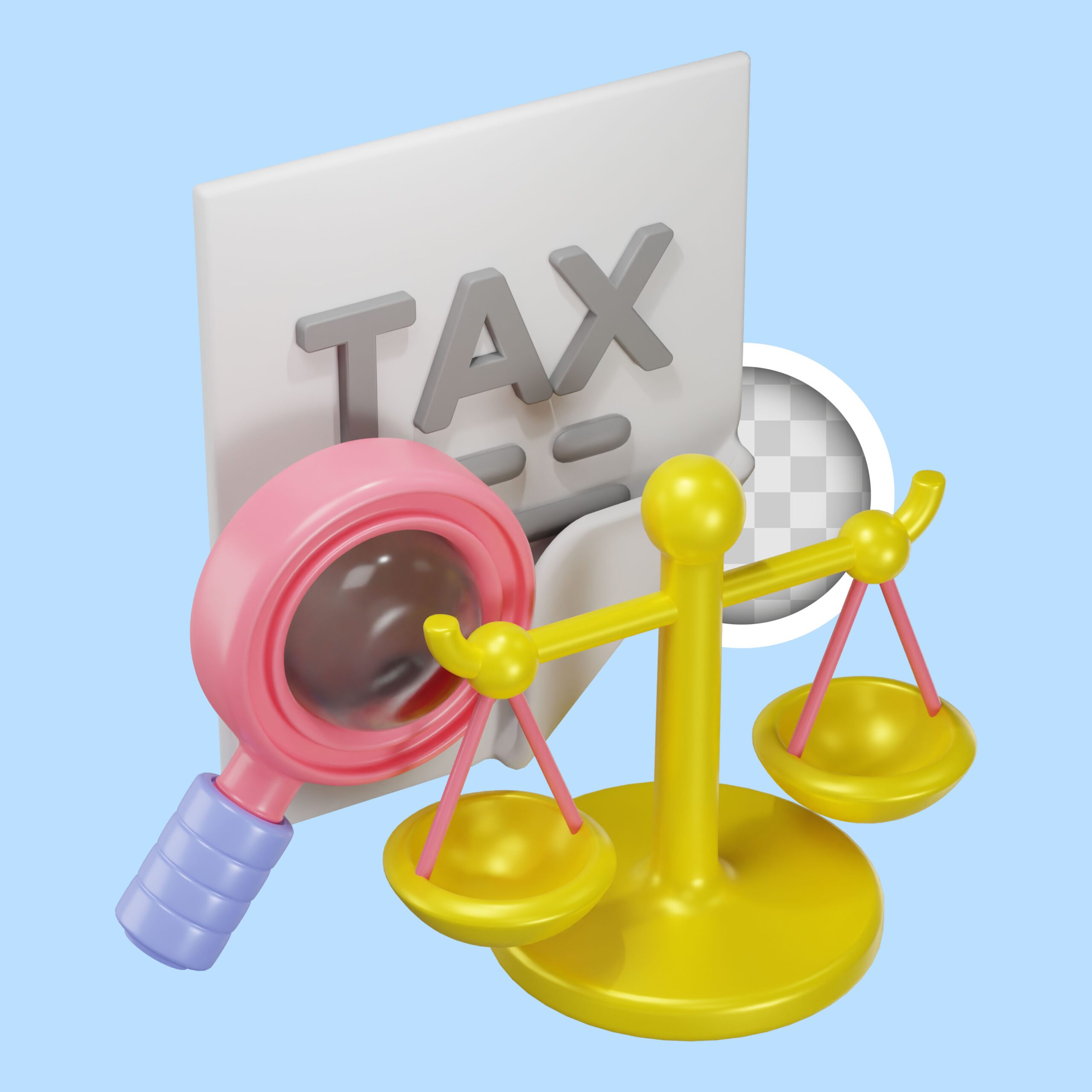Unlocking Your Property's Potential: A Comprehensive Guide to Capital Gains Tax in India (FY 2025-26)


Selling a property in India can be an exciting chapter, often bringing with it a significant financial uplift. But amidst the joy of a successful sale, there’s an important aspect that often brings a furrowed brow: Capital Gains Tax. Understanding this tax is crucial to ensuring a smooth transaction and maximizing your net proceeds.
For the Financial Year 2025-26 (Assessment Year 2026-27), the rules around capital gains on property sales have seen some significant clarifications and adjustments. This guide aims to demystify these complexities, offering a complete, SEO-friendly, and human-touch explanation to help you navigate the nuances of property-related capital gains in India.
What Exactly is Capital Gains Tax?
In simple terms, Capital Gains Tax (CGT) is a tax levied on the profit you make from selling an “asset.” When it comes to property, this profit is the difference between your selling price and your acquisition cost (what you paid for it, plus any improvements and transfer expenses). The Indian Income Tax Act classifies property as a “capital asset,” making its sale subject to capital gains tax.
The crucial distinction lies in how long you’ve held the property. This determines whether your gains are classified as “Short-Term Capital Gains” (STCG) or “Long-Term Capital Gains” (LTCG), each with different tax implications.
Short-Term vs. Long-Term Capital Gains on Property: The Holding Period Matters
The holding period of your property is the key differentiator.
Short-Term Capital Gain (STCG): If you sell a property after holding it for 24 months (2 years) or less, the profit is considered a Short-Term Capital Gain.
Long-Term Capital Gain (LTCG): If you sell a property after holding it for more than 24 months (2 years), the profit is considered a Long-Term Capital Gain.
This 24-month period is vital to remember, as it significantly impacts your tax liability and available exemptions.
Decoding the Tax Rates for FY 2025-26
The Union Budget 2024 and subsequent clarifications for FY 2025-26 have brought notable changes to LTCG rates, particularly concerning indexation benefits.
Short-Term Capital Gains (STCG) on Property
For STCG, the gains are added to your total income and taxed at your applicable income tax slab rates. This means if you fall into the 30% tax bracket, your STCG will also be taxed at 30% (plus applicable surcharge and cess).
Calculation of STCG:
STCG = Full Value of Consideration (Sale Price) – Cost of Acquisition – Cost of Improvement – Expenses on Transfer
Full Value of Consideration: This is the actual sale price you receive for the property.
Cost of Acquisition: The price at which you originally purchased the property.
Cost of Improvement: Any expenses incurred on making additions or alterations to the property that increase its value (e.g., major renovations).
Expenses on Transfer: Costs directly related to the sale, such as brokerage fees, legal expenses, and stamp duty paid by the seller.
Long-Term Capital Gains (LTCG) on Property
This is where things get a bit more nuanced for FY 2025-26.
For property acquired ON or AFTER July 23, 2024:
The LTCG tax rate is 12.5% without any indexation benefit. This is a significant change, as it means the cost of acquisition will not be adjusted for inflation. While the rate is lower than the previous 20%, the absence of indexation can lead to higher taxable gains.
For property acquired BEFORE July 23, 2024:
Taxpayers have an option:
Pay tax at 12.5% without indexation benefits, OR
Pay tax at 20% with indexation benefits.
This choice allows taxpayers to select the option that results in a lower tax liability, depending on their individual circumstances and the period of holding.
What is Indexation and Why Was it Important (and why is it changing)?
Indexation is a crucial mechanism that allowed taxpayers to adjust the “cost of acquisition” of their long-term assets for inflation using the Cost Inflation Index (CII) published by the Central Board of Direct Taxes (CBDT). This essentially increased the purchase price in line with inflation, reducing the taxable capital gain and, consequently, the tax liability.
Formula for Indexed Cost of Acquisition:
Indexed Cost of Acquisition = Original Cost of Acquisition × (CII of the year of sale / CII of the year of acquisition)
The CII for FY 2025-26 has been notified at 376.
While the indexation benefit has been largely removed for new property acquisitions from July 23, 2024, the option to choose between 12.5% without indexation and 20% with indexation for older acquisitions allows for some strategic tax planning. It’s vital to calculate both scenarios to determine which yields a lower tax.
Calculation of LTCG:
LTCG = Full Value of Consideration (Sale Price) – Indexed Cost of Acquisition (if applicable) – Indexed Cost of Improvement (if applicable) – Expenses on Transfer
Essential Exemptions to Reduce Your Capital Gains Tax
The Indian Income Tax Act provides several exemptions that can significantly reduce or even eliminate your capital gains tax liability on property sales, especially for LTCG. Understanding and strategically utilizing these exemptions is key to optimizing your tax outcome.
Section 54: Exemption on Sale of Residential House Property
Applicability: Available to individuals and Hindu Undivided Families (HUFs) selling a residential house property.
Condition: The capital gains from the sale must be reinvested in purchasing another residential property in India.
Time Limit for Reinvestment:
Purchase: 1 year before or 2 years after the date of sale.
Construction: 3 years from the date of sale.
Exemption Amount: The exemption is the lower of the capital gains arising from the sale, or the cost of the new residential property.
Important Cap: From April 1, 2023, the exemption under Section 54 is capped at ₹10 crore. This means if your capital gains exceed ₹10 crore, the exemption will be limited to ₹10 crore, and the remaining gains will be taxable.
Lock-in Period: The new property purchased/constructed must not be sold within 3 years from the date of its purchase/completion. If sold within this period, the exemption claimed will be revoked and the capital gain will be taxed in the year of sale of the new property.
Capital Gains Account Scheme: If you cannot invest the entire capital gains before the due date for filing your Income Tax Return (ITR), you can deposit the unutilized amount in a Capital Gains Account Scheme (CGAS) with specified banks. This amount must then be utilized for the new property within the prescribed time limits.
Section 54EC: Exemption by Investing in Specific Bonds
Applicability: Available to all taxpayers for LTCG from the sale of any long-term capital asset, including property.
Condition: Capital gains are invested in specific long-term infrastructure bonds notified by the government. These typically include bonds issued by the National Highways Authority of India (NHAI) and Rural Electrification Corporation (REC).
Time Limit for Reinvestment: Within 6 months from the date of property sale.
Maximum Investment: The maximum investment allowed in these bonds is ₹50 lakh in a financial year.
Lock-in Period: These bonds have a lock-in period of 5 years. If redeemed or transferred before 5 years, the exemption will be revoked.
Section 54F: Exemption on Sale of Any Long-Term Capital Asset (Other than a Residential House)
Applicability: Available to individuals and HUFs when they sell any long-term capital asset (like land, gold, shares, etc., but NOT a residential house) and invest the net sale consideration (not just the capital gains) in purchasing/constructing a residential house in India.
Condition: On the date of the sale of the original asset, you should not own more than one residential house (excluding the new one being purchased).
Time Limit for Reinvestment: Same as Section 54 (1 year before or 2 years after for purchase; 3 years after for construction).
Exemption Amount:
If the entire net sale consideration is invested in the new house, the entire capital gain is exempt.
If only a part of the net sale consideration is invested, the exemption is proportionate.
Cap: The exemption under Section 54F is also subject to the ₹10 crore cap on the cost of the new residential property from April 1, 2023.
Lock-in Period: The new property must not be sold within 3 years.
Special Scenarios and Considerations
Inherited Property: When you inherit a property, there is no tax liability at the time of inheritance. However, when you sell it, capital gains tax becomes applicable. The “cost of acquisition” for inherited property is considered the cost for the original owner who first acquired it. The holding period is also calculated from the original owner’s acquisition date. This often makes inherited property sales eligible for LTCG benefits.
Jointly Owned Property: If a property is jointly owned and sold, the capital gains are calculated individually for each co-owner based on their respective share in the property. Each co-owner can then claim applicable exemptions based on their individual capital gains. Ensure clear documentation of ownership shares and payment responsibilities.
Agricultural Land:
Rural Agricultural Land: Agricultural land located in rural areas (as defined by the Income Tax Act, based on population and distance from municipal limits) is generally not considered a capital asset and thus, its sale is exempt from capital gains tax.
Urban Agricultural Land: Agricultural land located in urban areas is considered a capital asset, and its sale is subject to capital gains tax. However, Section 54B offers an exemption if the gains are reinvested in new agricultural land within two years.
TDS on Property Sale (Section 194-IA): If the sale consideration of an immovable property (other than agricultural land) exceeds ₹50 lakh, the buyer is required to deduct TDS (Tax Deducted at Source) at the rate of 1% from the payment made to the seller. This TDS can be claimed as a credit by the seller when filing their ITR.
Documents You’ll Need for Filing Capital Gains
To accurately calculate and report your capital gains, keep the following documents handy:
Sale Deed: The document proving the sale of the property.
Purchase Deed/Agreement: The document proving your original acquisition of the property.
Cost of Improvement Receipts: Invoices or receipts for any significant renovations or improvements made.
Brokerage/Legal Expense Receipts: Documentation of expenses incurred during the sale and purchase.
Bank Statements: Proof of transaction for both sale and purchase.
Property Valuation Report (if applicable): Especially if you are considering Fair Market Value as on April 1, 2001, for properties acquired before that date.
Aadhaar and PAN Card: For identification and tax purposes.
Form 26AS: To verify TDS deductions.
Documents related to reinvestment: Sale deed of new property, investment certificates for bonds (if claiming exemptions under Section 54, 54EC, or 54F).
Filing Your Income Tax Return (ITR)
Capital gains on property are typically reported in ITR-2 for individuals and HUFs who do not have income from “Profits and Gains of Business or Profession.” For FY 2025-26, the Income Tax Department has released Excel utilities for ITR-2 and ITR-3, making the filing process more streamlined. Ensure you accurately fill in Schedule CG (Capital Gains) and claim all eligible exemptions.
A Human Touch to Your Tax Planning
Navigating capital gains tax can feel like a maze, but remember, it’s about being informed and proactive. Don’t wait until the last minute to consider the tax implications of your property sale.
Consult a Tax Advisor: Given the ongoing changes and individual specificities, it’s highly advisable to consult with a qualified tax advisor. They can provide personalized guidance, help you optimize your tax liability, and ensure compliance.
Plan Your Reinvestment: If you intend to claim exemptions by reinvesting, plan your purchases or investments well within the stipulated timeframes. Missing deadlines can lead to significant tax implications.
Maintain Meticulous Records: Keep all property-related documents, receipts, and proofs of expenditure organized. This will be invaluable when calculating your capital gains and supporting your claims during tax filing or potential scrutiny.
Understand Fair Market Value (FMV) for Pre-2001 Acquisitions: If you acquired the property before April 1, 2001, you have the option to consider the Fair Market Value of the property as of April 1, 2001, instead of the actual cost of acquisition. This can often significantly reduce your capital gains. This FMV needs to be supported by a valuation report from a registered valuer.
Conclusion: Empowering Your Property Journey
Selling a property is a significant financial event. By understanding the intricacies of Capital Gains Tax in India for FY 2025-26, particularly the changes concerning indexation and the various exemptions available, you can approach your property sale with confidence. Remember, informed planning and professional guidance are your best allies in ensuring a tax-efficient and successful transaction. Here’s to unlocking the full potential of your property investment!
Frequently Asked Questions (FAQs) on Capital Gains Tax on Property Sale in India (FY 2025-26)
1. What's the main change in Capital Gains Tax on property for FY 2025-26?
The most significant change is related to Long-Term Capital Gains (LTCG) on property. For properties acquired on or after July 23, 2024, the LTCG tax rate is a flat 12.5% without indexation benefit. For properties acquired before July 23, 2024, you have an option: either pay 12.5% without indexation, or 20% with indexation. This allows you to choose the more beneficial option.
2. What is the difference between Short-Term and Long-Term Capital Gains on property?
The difference hinges on the holding period:
Short-Term Capital Gain (STCG): Arises if you sell a property within 24 months (2 years) or less of acquiring it. STCG is added to your total income and taxed at your applicable income tax slab rates.
Long-Term Capital Gain (LTCG): Arises if you sell a property after holding it for more than 24 months (2 years). LTCG has specific tax rates and can be eligible for various exemptions.
3. What is indexation, and why is it important (or not anymore)?
Indexation is a method of adjusting the cost of acquisition for inflation using the Cost Inflation Index (CII). This increases your purchase price, which in turn reduces your taxable capital gain, lowering your tax liability. For properties acquired before July 23, 2024, you can still opt for indexation with a 20% tax rate. However, for properties acquired on or after July 23, 2024, the indexation benefit has been removed for property, with a reduced flat tax rate of 12.5%. This simplifies calculations but means no inflation adjustment for newer acquisitions.
4. Can I reduce my Capital Gains Tax on property sale? How?
Yes, you can significantly reduce or even eliminate your LTCG tax liability by utilizing certain exemptions provided under the Income Tax Act. The most common ones are:
Section 54: By reinvesting the capital gains from the sale of a residential house into purchasing/constructing another residential house in India within specified timelines.
Section 54EC: By investing the capital gains (from any long-term asset, including property) in specific long-term infrastructure bonds (like NHAI/REC bonds) within 6 months of the sale, up to a maximum of ₹50 lakh per financial year.
Section 54F: By reinvesting the net sale consideration (not just the capital gains) from the sale of any long-term capital asset (other than a residential house) into purchasing/constructing a residential house in India.
5. Is there a limit on the exemption under Section 54 for residential property?
Yes, from April 1, 2023, the exemption under Section 54 is capped at ₹10 crore. This means if your capital gains exceed ₹10 crore, the exemption will be limited to ₹10 crore, and the remaining gains will be taxable.
6. What happens if I can't reinvest the capital gains before the ITR filing deadline?
If you are unable to invest the entire capital gains in a new property before the due date for filing your Income Tax Return (ITR), you can deposit the unutilized amount into a Capital Gains Account Scheme (CGAS) with a public sector bank. This amount must then be utilized for the new property within the prescribed time limits (2 years for purchase, 3 years for construction). If not utilized within the time frame, the unutilized amount becomes taxable.
7. How is capital gains tax calculated on inherited property?
When you inherit a property, there is no tax liability at the time of inheritance. Tax applies only when you sell it. For calculating capital gains on inherited property:
The cost of acquisition is considered the cost for the original owner who first acquired the property.
The holding period is calculated from the original owner’s acquisition date. This typically makes inherited property sales eligible for LTCG benefits.
If the original acquisition was before April 1, 2001, you can opt for the Fair Market Value (FMV) as of April 1, 2001, as the cost of acquisition.
For inherited properties sold on or after July 23, 2024, the 12.5% tax rate applies without indexation. If acquired before July 23, 2024 (by the original owner), the choice between 12.5% without indexation or 20% with indexation still applies.
8. Is TDS applicable on property sales?
Yes, under Section 194-IA, if the sale consideration of an immovable property (excluding agricultural land) exceeds ₹50 lakh, the buyer is required to deduct TDS at 1% from the payment made to the seller. The seller can then claim this TDS as a credit when filing their Income Tax Return.
9. Which ITR form should I use to declare capital gains from property?
For individuals and Hindu Undivided Families (HUFs) who do not have income from “Profits and Gains of Business or Profession,” capital gains on property are typically reported in ITR-2. If you have business income, you might need to file ITR-3.
10. What happens if I sell the new property (purchased for exemption) within the lock-in period?
If you sell the new residential property (purchased under Section 54 or 54F exemption) within 3 years from its purchase/completion date, the exemption claimed earlier will be revoked. The capital gain that was previously exempt will become taxable in the year the new property is sold. Similarly, for Section 54EC bonds, if redeemed or transferred within 5 years, the exemption is revoked.

